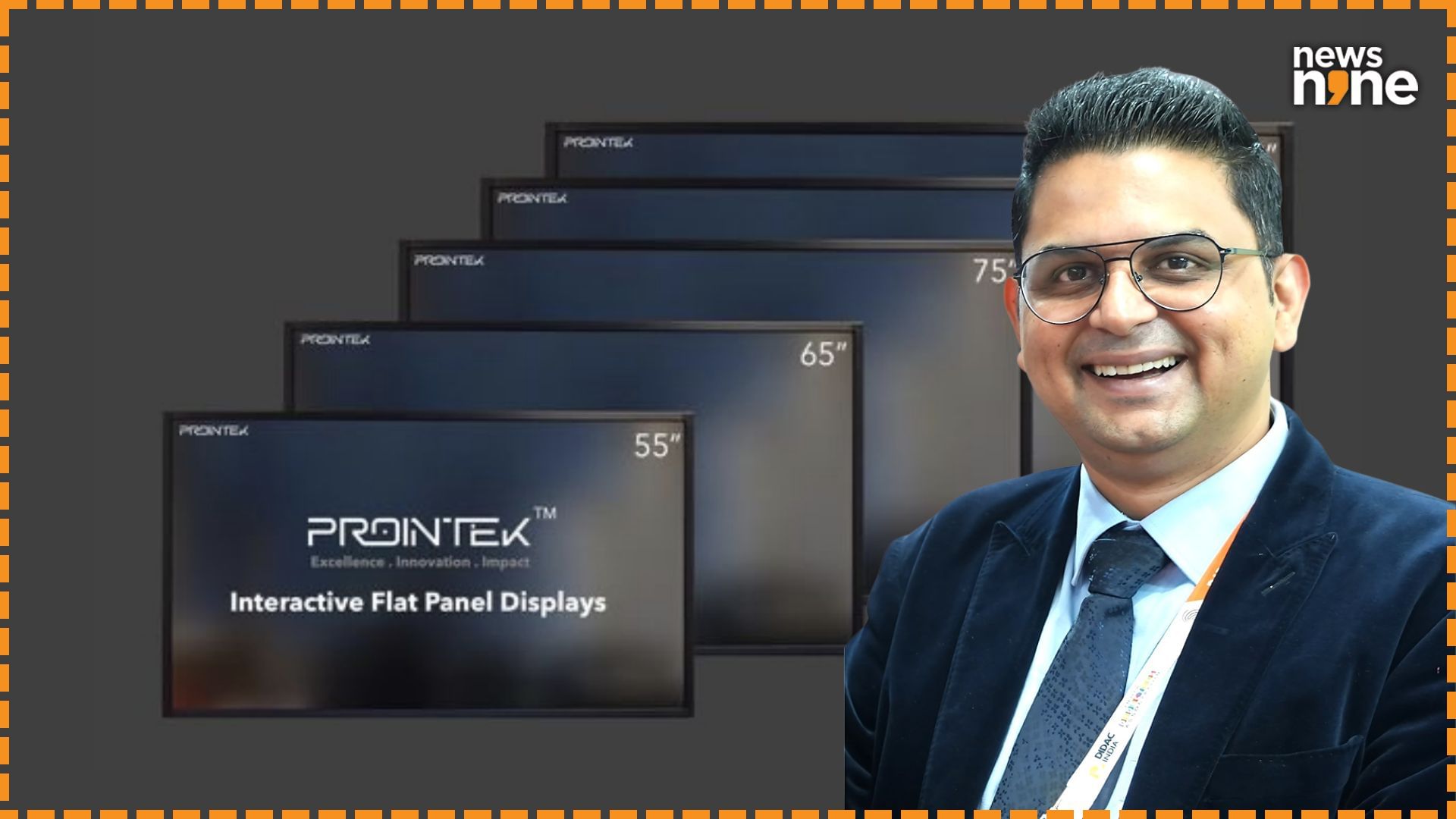New Delhi: Interactive displays are proliferating in classrooms across the country, just as they did in boardrooms. These multimedia-rich replacements for whiteboards and blackboards benefit both the teacher and the student, and are making education more fun and interactive. AI technologies are allowing teachers to rapidly plan lessons, and can now even convert sketches to high-quality graphics. In the future, AI is expected to increase the dynamism and personalisation of interactive displays, integrating multimodal interactions, adapting to the needs of students, and connecting classrooms globally. We spoke to Ramya Chatterjee, the Chief of Solitaire Brand Business as well as the CEO and Director of Prointek Global Innovations, the Manufacturing division of Supertron Electronics, to better understand how AI in interactive displays is poised to transform education.
Chatterjee explains, “AI will transform interactive panels and smart boards from passive display tools into intelligent learning partners that adapt in real-time to student needs, automatically generating personalized content, simulations, and visual aids based on classroom dynamics and individual comprehension levels. These future boards will seamlessly integrate multimodal interactions—voice, gesture, touch, and eye tracking—while using predictive analytics to anticipate learning challenges before they occur, creating collaborative networks that connect classrooms globally and facilitating deeper, more personalized educational dialogues where the technology becomes an invisible mediator between teachers and students rather than just a presentation screen. These panels will analyze student engagement and comprehension, provide instant feedback, and integrate seamlessly with cloud platforms and learning management systems. By automating routine tasks such as assessment and content preparation, AI will free teachers to focus on mentorship, creativity, and human connection, making classrooms more adaptive, engaging, and inclusive than ever before.”
Collaboration in the classroom
The AI capabilities are already integrated in content creation and transcription, providing realtime captions as well. The capabilities can be boosted by plug-and-play modular computing platforms. We can expect displays to get bigger, brighter and faster, which is the natural progression of the technology. With seamless connectivity, we can also expect much more collaboration within and between educational institutions. We next wanted to understand what the future holds in terms of specifications and capabilities.
Chatterjee tells us, “the next generation of interactive panels will bring major advancements over current technology, including ultra-bright mini-LED or Micro-LED displays with higher refresh rates, richer colors, and low-glare optical bonding; faster, more natural touch and inking with multi-user support; and built-in AI engines for real-time transcription, translation, smart note-taking, and content generation. They will feature advanced cameras, microphones, and audio for seamless hybrid collaboration, more powerful modular compute with dual-OS options, and ultra-fast connectivity like Wi-Fi 7 and USB4. Enhanced casting, cloud integration, and security tools will make them smarter and easier to manage, while sustainable designs with energy efficiency, durable materials, and field-replaceable components will lower total cost of ownership. Overall, these panels will evolve from digital whiteboards into intelligent, secure, and eco-friendly collaboration hubs for classrooms and meeting rooms.”
Analytics for Teachers
The realtime interaction and multitouch means that educators have multiple exciting ways to get students to participate in the lessons, from polls to quizzes to challenges. Integrated intelligence and platforms can allow teachers to track the progress of students as well. Chatterjee says, “Real-time data analytics and personalized learning integration will fundamentally transform the student experience by creating adaptive learning environments that respond instantly to individual needs, learning patterns, and engagement levels. These systems will continuously monitor student interactions, comprehension signals, and performance metrics to automatically adjust content difficulty, presentation style, and pacing in real-time, ensuring each student receives optimal challenge levels without falling behind or becoming bored. The analytics will identify knowledge gaps immediately and provide targeted interventions, while personalized pathways will branch lessons based on individual learning styles, interests, and academic strengths, creating a truly customized educational journey where students experience greater engagement, improved retention, and accelerated mastery as the technology becomes an invisible tutor that understands and adapts to their unique learning profile throughout each lesson.”
Into the metaverse
We are already seeing some HUDs and VR tech in classrooms. AR and VR are poised to revolutionise smart boards, transforming them into gateways for immersive, interactive learning environments that use 3D models in virtual environments, allowing for experiential education and a deeper level of engagement. The collaboration and problem-solving can blend virtual reality with meatspace. Chatterjee says, “Immersive technologies like AR and VR will fundamentally transform smart board solutions by extending the classroom beyond physical boundaries and making abstract concepts tangible through experiential learning and immersive digital experiences. They will expand Interactive whiteboards from being interactive displays into gateways for experiential learning and collaboration. With AR, smart boards can project 3D models, simulations, and visual overlays that students can manipulate in real time, making complex concepts – like human anatomy or engineering design – more tangible and engaging.”
The boring subjects tend to benefit particularly. Instead of a diagram showing supercontinent cycles or the process of the formation of igneous rocks, there can be rich interactive animations, that the students can explore and learn from. Chatterjee adds, “VR integration will allow students to step into virtual classrooms, labs, or historical sites directly from the board, creating shared immersive experiences without requiring every learner to have a headset. For teachers and professionals, this means the ability to deliver lessons, training, and brainstorming sessions that are not only visual but experiential, fostering deeper understanding and stronger retention. Ultimately, AR/VR will transform smart boards into collaborative canvases where physical and digital worlds merge, making learning and problem-solving far more interactive and impactful.”
